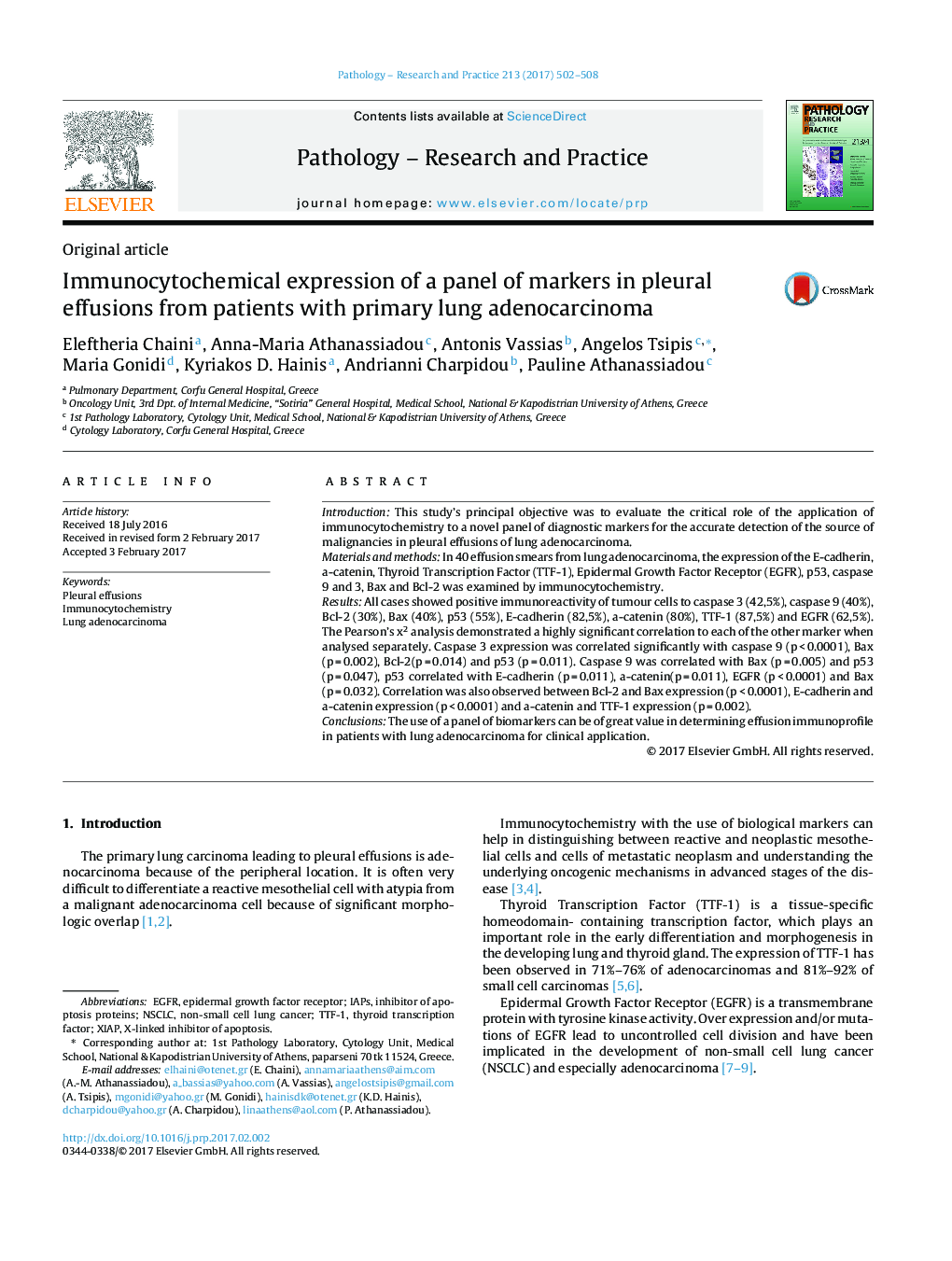| Article ID | Journal | Published Year | Pages | File Type |
|---|---|---|---|---|
| 5529217 | Pathology - Research and Practice | 2017 | 7 Pages |
IntroductionThis study's principal objective was to evaluate the critical role of the application of immunocytochemistry to a novel panel of diagnostic markers for the accurate detection of the source of malignancies in pleural effusions of lung adenocarcinoma.Materials and methodsIn 40 effusion smears from lung adenocarcinoma, the expression of the E-cadherin, a-catenin, Thyroid Transcription Factor (TTF-1), Epidermal Growth Factor Receptor (EGFR), p53, caspase 9 and 3, Bax and Bcl-2 was examined by immunocytochemistry.ResultsAll cases showed positive immunoreactivity of tumour cells to caspase 3 (42,5%), caspase 9 (40%), Bcl-2 (30%), Bax (40%), p53 (55%), E-cadherin (82,5%), a-catenin (80%), TTF-1 (87,5%) and EGFR (62,5%). The Pearson's x2 analysis demonstrated a highly significant correlation to each of the other marker when analysed separately. Caspase 3 expression was correlated significantly with caspase 9 (p < 0.0001), Bax (p = 0.002), Bcl-2(p = 0.014) and p53 (p = 0.011). Caspase 9 was correlated with Bax (p = 0.005) and p53 (p = 0.047), p53 correlated with E-cadherin (p = 0.011), a-catenin(p = 0.011), EGFR (p < 0.0001) and Bax (p = 0.032). Correlation was also observed between Bcl-2 and Bax expression (p < 0.0001), E-cadherin and a-catenin expression (p < 0.0001) and a-catenin and TTF-1 expression (p = 0.002).ConclusionsThe use of a panel of biomarkers can be of great value in determining effusion immunoprofile in patients with lung adenocarcinoma for clinical application.
